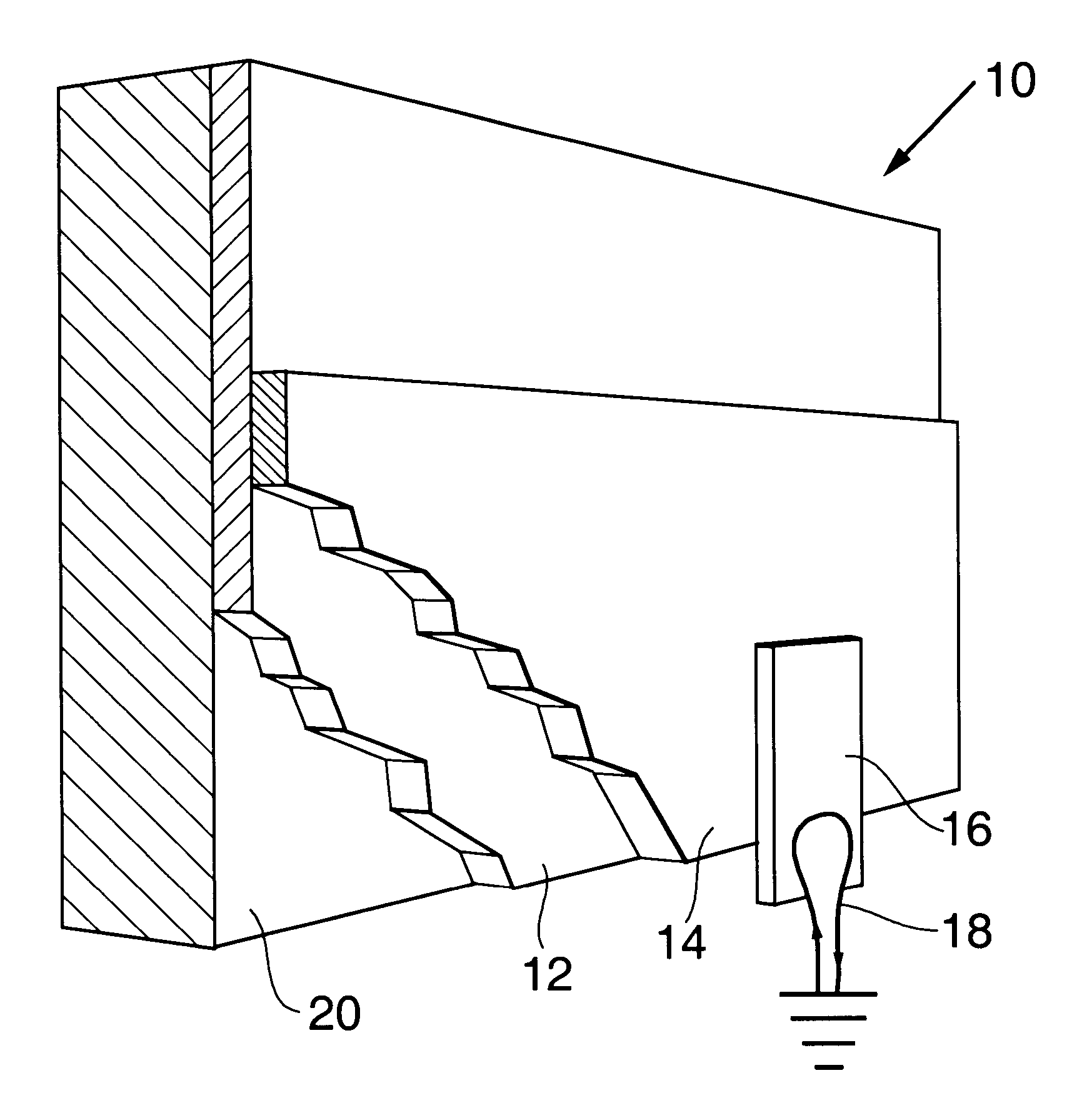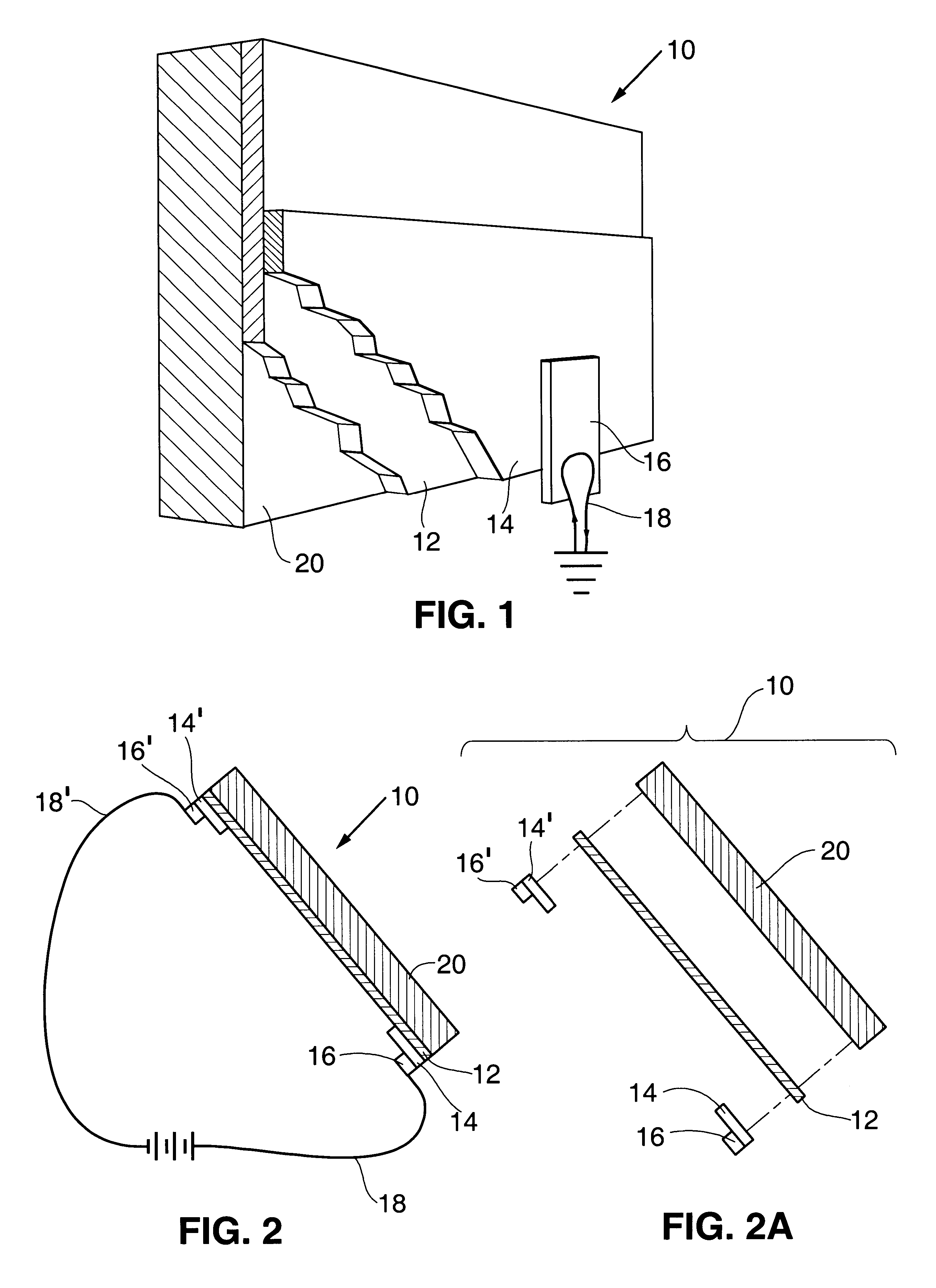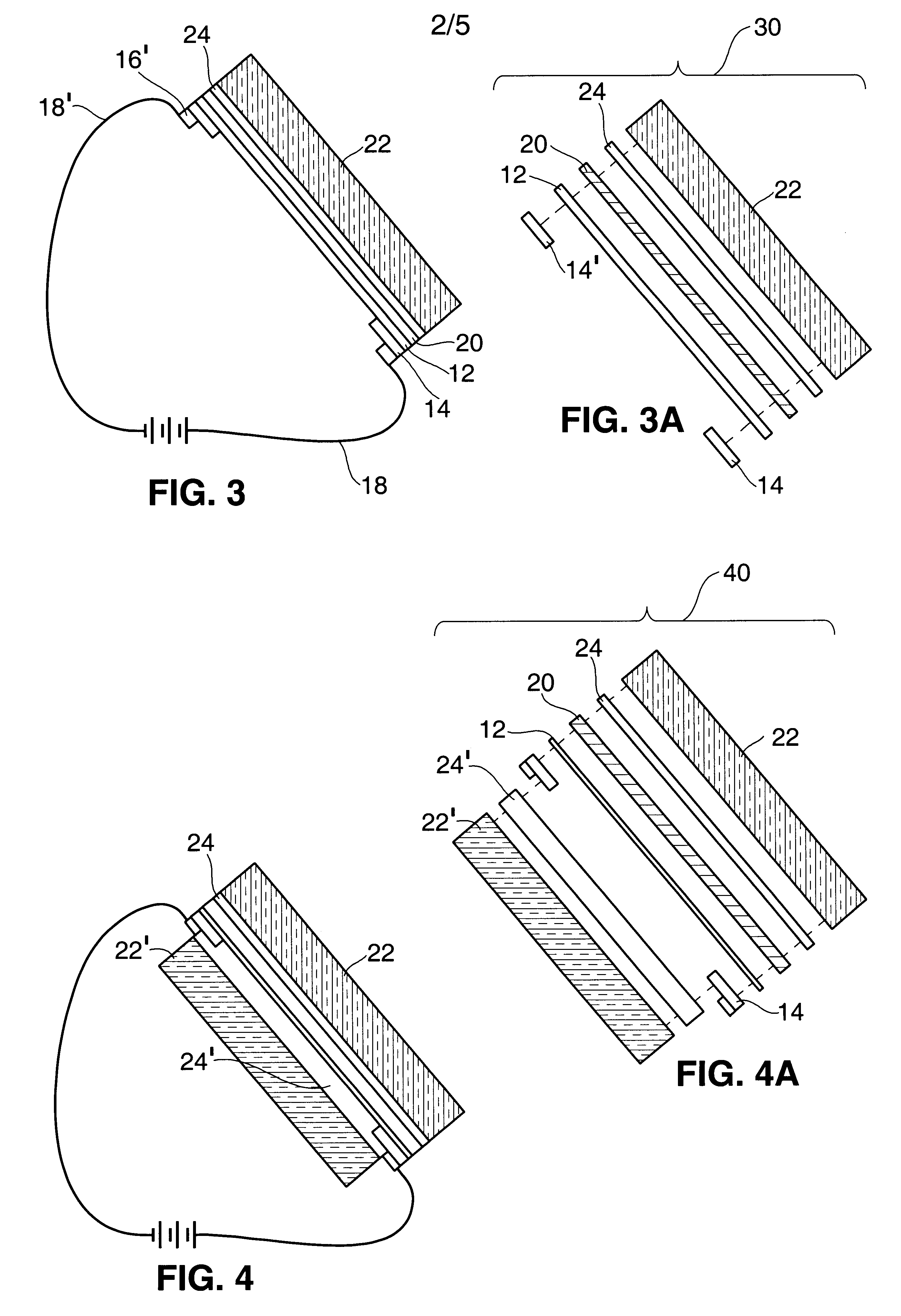Vacuum deposition of bus bars onto conductive transparent films
a technology of conductive transparent film and vacuum deposition method, which is applied in the direction of conductive layers on insulating supports, heater elements, synthetic resin layered products, etc., can solve the problems of brittle materials, disturbed conductive elements, poor results of both methods, etc., and achieve the effect of varying the thickness of bus bars
- Summary
- Abstract
- Description
- Claims
- Application Information
AI Technical Summary
Benefits of technology
Problems solved by technology
Method used
Image
Examples
example 1
(sputtered bus bars):
A 13.5 inch wide polyester film carrying the conductive layer just described was coated with a pair of 3.5 inch wide silver bus bars in a laboratory roll coater. The bus bars were 4.5 inches apart and ran downweb along the substrate. The two bus bars were applied from a single silver target which was masked in the center to provide the transparent region between the two electrodes. The bus bars were about 100 nm thick.
A 1.5 by 6 inch safety glass laminate was prepared by inserting the coated plastic film with sputtered bus bars between two 15 mil plies of PVB (i.e. RB11 Saflex manufactured by Solutia). The conductive interlayer was then placed between two 2.1 mm thick pieces of float glass and bonded in a Carver (model 2518) heated press. The laminating conditions in the Carver Press were ramping up for 20 minutes from room temperature to 120.degree. C. followed by 30 minutes at the constant temperature of 120.degree.. The pressure was set to about 80 lbs / in.sup...
PUM
| Property | Measurement | Unit |
|---|---|---|
| wavelength | aaaaa | aaaaa |
| wavelength | aaaaa | aaaaa |
| Transparent | aaaaa | aaaaa |
Abstract
Description
Claims
Application Information
 Login to View More
Login to View More - R&D
- Intellectual Property
- Life Sciences
- Materials
- Tech Scout
- Unparalleled Data Quality
- Higher Quality Content
- 60% Fewer Hallucinations
Browse by: Latest US Patents, China's latest patents, Technical Efficacy Thesaurus, Application Domain, Technology Topic, Popular Technical Reports.
© 2025 PatSnap. All rights reserved.Legal|Privacy policy|Modern Slavery Act Transparency Statement|Sitemap|About US| Contact US: help@patsnap.com



